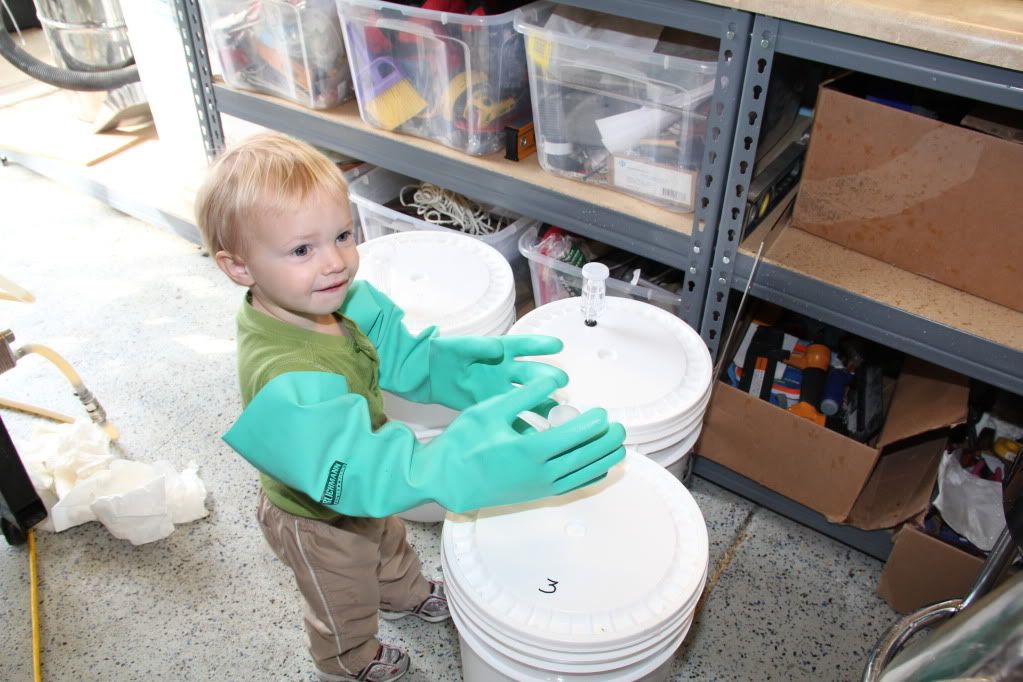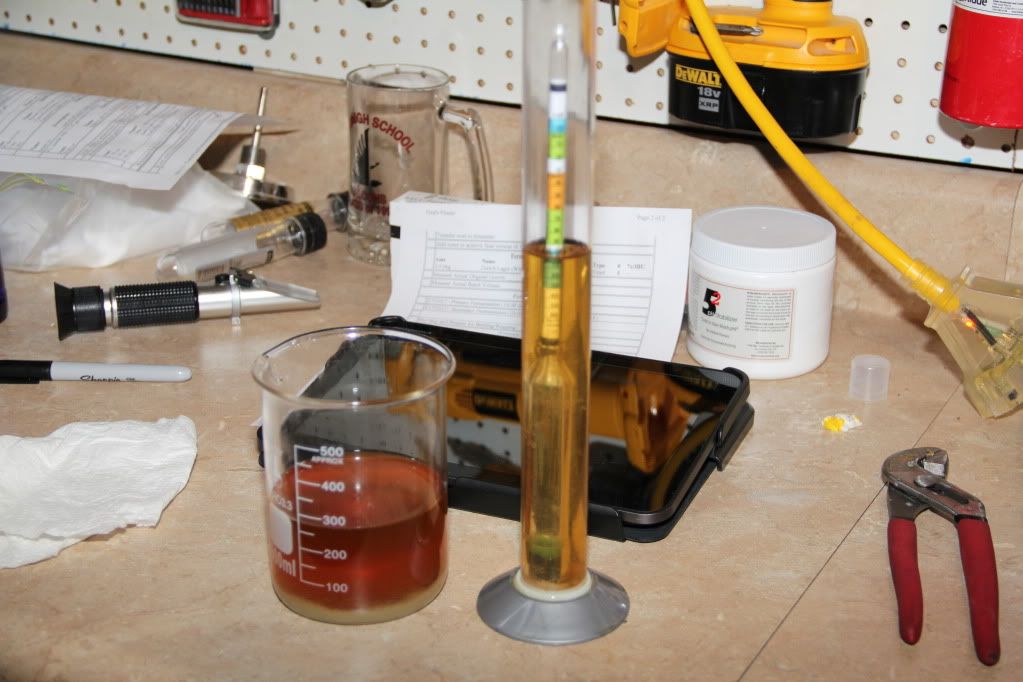THANK YOU!!! For proving my point exactly!!!
Actually, I disproved it analytically and demonstrated the fallacy in the lab.
You add a few teaspoons of 5.2 powder to your water and add some BARLEY (I mean who would have thought of adding malted barley to a homebrew recipe?) and you get a pH of 5.2!
No, you don't. I just did another quickie experiment with it. My well water runs alkalinity about 80 and pH 6.48 about 20 min after drawing it. With double approximately the recommended dose of 5.2 the pH goes to 6.47. Adding 50 grams of ground Munich I (what I happened to have on hand in the lab) to 100 mL of this water (no 5.2) comes to a pH of 5.48. Adding 5.2 makes no change. Doubling the dose causes an increase to 5.50 and trebling the dose brings it to 5.52. Obviously it's trying to buffer to its design pH which is apparently around 6.1 because that's what it buffers 18 megohm DI water to.
This was an interesting result which reveals another flaw in the design of this product it relies on malt phosphate but apparently malt phosphate isn't always available and, of course, what is in a particular malt, would depend on the cultivar, the malting procedure, the season etc.
In an earlier experiment with Maris Otter the DI dough in pH was 5.7. The recommended dose was able to pull that down to 5.68 and treble the dose was able to pull it down to 5.66. In other words in this case it was able to access some malt phosphate but not enough to pull the pH down to anywhere near 5.2. But this is unsurprising. If you are really a chemist you should understand that a phosphate buffer is at its weakest at pH 4.7 which is half a unit away from 5.2. You should also recall that phosphate is not a good choice for a buffer outside the range 1.1 - 3.1 or 6.2 - 8.2.
Without reading 31 pages of mumbo jumbo or spending hours worrying about your water.
The whole concept behind this thread is KISS. Water treatment for brewing is summarized neatly in the first post. Hijacking the thread with nonsense about this product which should be taken off the market doesn't help. People might believe you.
I tested it last night - I'd be happy to youtube it.
That I would like to see.
I spent over a decade as a Nuclear Chemist doing pH analysis dozens of times a day so I am very very familiar with how it works, how the calibration buffers work and what a simple buffer such as 5.2 is actually doing.
Apparently you aren't or you would at least respond to the buffer strength argument.
It works and you don't need a PhD to get it to work - just a measuring spoon and 2 minutes of time!
You are the first person that I have seen claim that it works based on a pH meter reading. Plenty of other guys have tried it and any who have used a pH meter to check on what it is doing have come to the same conclusion I have. For a long time I thought 'there must be some conditions under which it works but no one seems to be able to find them. One guy even called the factory and asked what the story was. They told him it was never intended to buffer to 5.2 but only to keep mash pH from going too low. That isn't what it says on the label. Perhaps you have found the Rosetta Stone. That's why I'd be so interested to see your proposed You-tube demo.
PS - I also don't rotate my truck's tires every 5000.000 miles like the salesman told me to but I still get 68,000 miles out of the 70,000 they advertised.... Saves me hundreds of hours of not waiting in his showroom!
WTF? Over.




